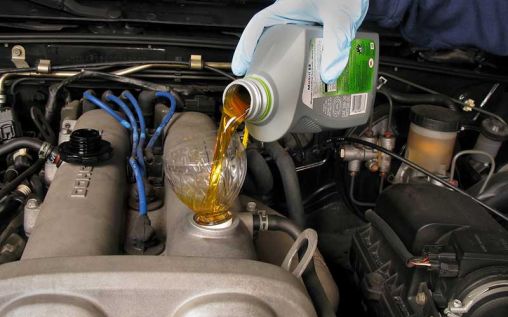Oil Be Black: 3 Things You Need To Know About Your Engine Oil
Posted by admin at 18 July 2018, at 18 : 57 PM

When something’s doing its job right, you don’t even know it’s doing anything at all. The saying is true of many things and it could certainly be applied to a lot of what’s going on under the hood of your car. With so many myriad moving parts, especially in today’s newer hybrid and electric cars, our vehicles are becoming an increasingly esoteric and unknowable commodity for the layman. So long as we keep our cars reasonably well maintained, however, it tends not to be a problem. But there’s a huge difference between knowledge and understanding. Pretty much all of us know that we need to keep our oil topped up and changed regularly, we also know how to check our oil levels but we’re not sure why. We know we need to buy the right oil for our vehicles, but we don’t understand what the difference is. With this in mind, here are some important facts that you need to know about your engine oil…
Does it really matter what kind of oil I put in there? Oil is oil, right?
Sure, there was a time when this was true. There was also a time when there were only 3 TV channels and only one brand of cola. The times have changed and with more manufacturers importing vehicles from all over the world there’s much greater variation in engine design. Different engines all need different grades of oil and different levels of viscosity. Your handbook will tell you the recommended oil type for your car and we don’t recommend you deviate from that. If you do, your engine may not get sufficient lubrication causing it to run rough and potentially causing disproportionate wear to moving parts. Over time this can cause damage to engine parts which could necessitate an expensive repair.
So what do these numbers and letters mean on the side of the bottle?
The numbers and letters indicate the viscosity of the oil in summer and winter. This is because the oil needs to be thin enough to allow the engine gto start when it’s thick and heavy while still remaining thick enough to lubricate the engine properly. Thus, back in the day a bottle of oil might be emblazoned with SAE20W50. This is because the oil has a viscosity of 20 in winter (yup, that’s what the W is for) and 50 in winter. Although now most engines run much closer tolerances so you’re more likely to see 30W40 than 20W50. The letters denote either API for the American petroleum Institute or ACEA for European Automobile Manufacturers Association. There will also be either an S for spark engine or C for compression engine (diesel).
Synthetic, mineral and semi synthetic… What’s the difference?
When you take your vehicle in to Kwik Kar for an oil change or lube service they will know what oil is best for your vehicle and your servicing needs. Most people get their oil changed every 12 months or 10,000 miles in which case a mineral oil or semi synthetic oil will do the job just fine. If, however, you use your car a lot for your work, you likely won’t have time to get your oil changed every 10,000 miles and so your servicing schedule will be changed to long life and you will get your oil changed every 20,000 miles.
This will require a synthetic oil. Synthetic oils are made in laboratories and to a higher standard than that afforded by nature, meaning that you can keep going for 20,000 miles knowing that your engine has got your back.
The more you know about your oil, the less likely you are to ensure that it keeps protecting your engine.
